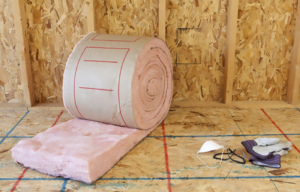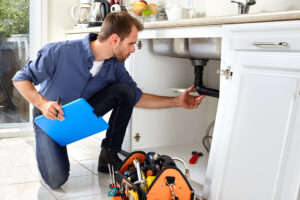Insulation Perth reduces heat transfer between areas in your home. It can be installed anywhere but is best suited to long, unobstructed areas such as attics.
Insulating materials have low thermal conductivity and emissivity. They trap air molecules, which move slowly, preventing heat transfer through convection.

Insulation can be made from a variety of recycled materials. These green building materials can help reduce the amount of petrochemicals needed to manufacture synthetic insulation, such as polystyrene (EPS and XPS) and mineral wool. Using these environmentally friendly materials for your home or office can also help earn you points toward LEED and other green certifications.
Some of the best green building insulation is made from recycled paper products. One such material is cellulose insulation, which is manufactured from old newspapers, cardboard, and other paper products that have been ground to produce a loose-fill material that can be easily installed in building cavities. The cellulose is treated with boric acid or ammonium phosphate to make it fire retardant and to keep mold and pests out. Cellulose has an R-value similar to fiberglass and can retain its insulating qualities even in sudden temperature changes. It also has low embodied energy, an important factor when comparing insulating materials.
Other recycling materials used in insulation include rock and slag wool, which is created by grinding up mineral waste from blast furnaces. This natural mineral product is mixed with other artificial products, such as plastics and glass, and can be shaped into blanket insulation or rolled into batts. It has an R-value comparable to that of fiberglass and is available in different thicknesses. Rock and slag wool requires little to no chemical treatment and is resistant to insects and mold.
Another green option is sheep wool insulation which can be bought in a number of types including blanket and rolled batts. It has a high R-value compared to fiberglass and is non-flammable and moisture resistant. It is a good choice for cooler climates as it keeps cool air in the summer and warm air in the winter.
Finally, recycled glass is an excellent insulation material that is easy to handle and a cost effective alternative to other more traditional materials. It is ground into a powder, mixed with binding agents and heated to create a foam glass ballast which is easily shaped into blanket insulation or poured into open cavities in a home. When distributed over the roof of a house, research has shown that this material showed the highest improvement in reducing indoor temperatures and increasing the period of comfort hours compared to straw bale and sheep wool materials.
Man-Made Materials
Insulation is a material that slows down the transfer of heat from warm things to cold objects. It keeps the warmth from escaping out of the walls, roof and floors of a building and it also stops cool air from entering the home. Insulation is made from a variety of materials, both natural and man-made. Natural materials are sourced from the environment, while man-made materials are crafted by chemists and engineers using industrial processes.
Fiberglass is one of the most common types of insulation, and it is available in a wide range of R-values. It can be applied as batts or pressed between studs. It does not absorb water, and it is highly fire resistant. However, there are a number of health and environmental concerns associated with the manufacture of fiberglass.
Cellulose is a type of thermal insulation that is made from recycled newspapers, cardboard and magazines. This material is not as common as fiberglass but it offers a number of benefits over other insulation materials. It does not itch during installation and it is moisture and mold resistant. It is available in a variety of R-values and it is also a cost effective choice.
Polyisocyanurate is a type of closed-cell foam that is used in a variety of insulation applications. It is very energy efficient, and it can be shaped and cut to fit the space in which it is installed. It is also less expensive than most other forms of insulation, and it can be installed with minimal disruption to the existing structure.
Mineral wool is a classification for two different kinds of man-made insulation: rock wool, which consists of natural minerals like basalt or diabase, and slag wool, which is created from the scum that collects on molten metal. On average, rock and slag wool contain 75% post-industrial recycled content. They do not require additional chemicals to make them fire resistant and they can be produced as blanket (batts and rolls) or loose-fill insulation. They are subject to 16 CFR Part 1209, a Consumer Products Safety Commission regulation that covers settled density, corrosiveness, critical radiant flux and smoldering combustion.
Eco-Friendly Materials
Eco-friendly insulation materials are made from natural or recycled sources and don’t impose harm to the environment during their production process. They also have minimal environmental impact once installed in a home or business, reducing energy consumption and lowering utility costs.
One of the most common types of eco-friendly insulation is cellulose. Cellulose is made from recycled newsprint and other paper products that would otherwise decompose in landfills and release harmful greenhouse gases. When it is produced, cellulose insulation requires up to ten times less embodied energy than other traditional insulating materials.
Another option is cotton insulation, which uses recycled denim to create a sustainable alternative to fiberglass batts and rolled foam board. While it may not be as dense as other options, cotton insulation is safe to handle and doesn’t contain formaldehyde. Another popular option is mineral wool, which can be found in homes built or remodeled in the 1800s. Mineral wool is a great choice for cold climates because it can prevent heat loss more effectively than other insulation materials.
Many of these eco-friendly insulation materials are available in a variety of R-values. As a general rule, opt for higher R-values because they offer more energy efficiency. This means that you’ll be able to reduce your home’s overall energy use without having to sacrifice comfort.
In addition to reducing the amount of energy needed for heating and cooling, eco-friendly insulation materials can help minimize other environmental impacts. For example, by blocking the transfer of heat through walls and ceilings, they can help keep the air in a home or office warmer in winter and cooler in summer.
A relatively new option on the market is Icynene, a spray foam that expands to up to 100x its natural volume when applied to a wall or roof cavity. This allows it to seal air leaks and drafts as well as buffer sound levels in a building. While the material does require special equipment to install, it is considered to be a good choice for homeowners who want to limit toxic products in their home.
Insulation Installation
Insulation is a quick and relatively inexpensive home improvement that saves energy, makes your house more comfortable, and may add value to your property. It also helps limit the flow of air from outside to inside, reducing your heating and cooling costs. It can keep noise from traveling from room to room and limit the transmission of environmental toxins.
Choosing the best insulation type and R-value will depend on your location, climate, and construction. A higher R-value indicates greater insulating capability. The different types of insulation vary in the size of its pockets, which slows the flow of heat; how thick it is; and whether it is faced or unfaced. Insulation facings prevent condensation that can rob the R-value of the material and encourage mold growth.
Some of the most common types of insulation include fiberglass, cellulose, and foam. Fiberglass insulation is available in rolls and batts that fit between wall studs, and can be cut to size around doors, windows, electrical outlets, and plumbing pipes. It cuts easily with a utility knife and is not as prone to exterior damage as some other insulation types.
Cellulose insulation is typically blown in place and requires a two man job. It can be dry blown or wet blown, and is usually installed in attics. It is effective at preventing downward heat flow, and can be in a bubble-form to provide resistance to upward heat flow if needed.
Foam insulation can be sprayed in an open cavity such as attics, crawl spaces, and rim joists, or injection injected in walls. It is a great choice for retrofit insulation, and can eliminate the need for other weatherizing tasks such as caulking and applying a housewrap and vapor barrier.
Structural insulated panels (SIPs) are prefabricated insulated structural elements for use in the walls, roof and floor of a new house or addition. They offer superior and more uniform insulation compared to traditional wood-frame construction, and can reduce energy bills by up to 14%. They can be installed quickly and are more resistant to moisture than other insulating materials.


